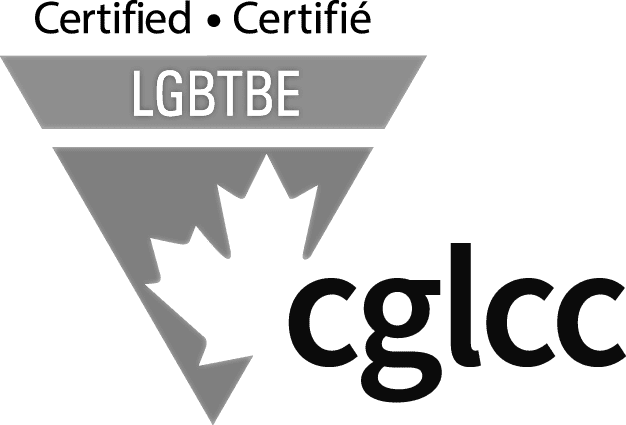Calan Breckon • Published October 13, 2025
Affiliate marketing gets a bad rap thanks to sketchy pitches and throwback pyramid schemes. This is not that. When done right, affiliate marketing is a straightforward, honest way for creators and companies to drive real revenue by connecting people with tools and products they already want. In this guide, you’ll learn what affiliate marketing is, how it works for both creators and businesses, where PartnerStack fits, why TikTok is shaking things up, and how to get started the smart way.
What Is Affiliate Marketing, Really?
Let’s clear up the confusion first. Affiliate marketing is a simple model. You share special affiliate links to products or services you believe in. If someone buys through your link, you earn a percentage of the sale. Think of it like influencer marketing for grown-ups, with tracking, reporting, and often recurring revenue when you partner with subscription products.
What it’s not:
- Not MLMs or pyramid schemes.
- Not spammy one-time promotions.
- Not hawking random pills or whatever’s trending this week.
It’s a business model rooted in trust, usefulness, and audience fit. You recommend tools you use, your audience gets value, and the business gains a new customer. Everyone wins. We’ll also look at how TikTok is building direct shopping into content, which is changing how affiliate promotion shows up in the wild.
Demystifying Key Terms: B2B, B2C, and SaaS
You’ll hear a few acronyms across this space. Here’s what they mean in plain English.
- B2B: Business-to-business, like software sold to companies and teams.
- B2C: Business-to-consumer, like kitchen gadgets you buy for your home.
- SaaS: Software as a service, cloud-based tools you pay monthly or yearly to use.
These models stretch from startups to midmarket to enterprise. Examples:
- Kit, an email marketing SaaS that serves creators and teams
- Food Network-style kitchen gadgets, a classic B2C example that fits editorial roundups
Inside PartnerStack: The Hub for Affiliate Growth
PartnerStack is an all-in-one ecosystem platform built for partnerships. At the core is a PRM, a partnership relationship management system that connects to one of the largest B2B partner networks. It was founded in 2015 as an affiliate solution for B2B tech and has matured into a powerhouse. Today it supports more than 500 B2B tech companies, with about 400 running affiliate programs.
What makes it useful:
- It connects vendors with ready partners, creators, and publishers.
- It centralizes your affiliate programs, reporting, and payments.
- It treats partnerships like serious, trackable co-marketing that drives revenue.
Pros to know:
- Centralized dashboard for multiple programs.
- Access to a large B2B partner network, with hundreds of thousands of active partners.
- Automated payments and admin tasks, so you spend more time creating and less time chasing invoices.
How Affiliates and Businesses Connect on PartnerStack
There are two sides to this model.
- On the vendor side, companies set up partner programs, define commissions, and invite or approve partners who match their audience.
- On the partner side, creators, bloggers, and publishers join programs and earn from qualified sales.
At its best, this is people helping people. Vendors reach new audiences through trusted creators. Creators earn by recommending tools that fit their readers and listeners.
Why Businesses Love Affiliate Marketing: Revenue Without the Ad Spend
Affiliate marketing gives companies an indirect sales channel that can scale without massive ad budgets. When a business commits to a clear strategy, this channel drives actual revenue and real customer growth. It also boosts brand awareness through trusted recommendations across blogs, newsletters, and podcasts.
You’ll see the best results when:
- Price points are low enough for fast decisions, or there’s a free tier.
- Transactions are high volume.
- There are established categories and creators already covering your space.
Audience fit is the heartbeat of affiliate success. If your blog is about entrepreneurship, business tools make sense. A clothing affiliate does not. Match the product to your reader’s needs and intent.
Publishers in B2C have used this playbook for years. Editorial roundups like “Best kitchen gadgets under $100” make it easy for readers to discover and buy. Affiliates have grown into a big industry, with estimates around 37.3 billion dollars globally in 2025. That growth reflects how much consumers value curated picks from sources they trust.
“It’s a form of co-marketing that drives literal revenue.”
Real-World B2C Wins and Lessons
Think of a Food Network-style article that curates cookware under $100. A reader who’s already looking for inspiration can browse, click, and buy in a few minutes. It’s like the old Sears catalog, only digital, fast, and personalized. The key is ethics. Many media brands keep affiliate content in branded or commerce sections, use clear disclosures, and avoid “selling too hard” in editorial features.
For a deeper look at content systems that support this kind of work, explore these essential systems for online businesses.
Ethics and Integrity: The Key to Legit Affiliate Success
Transparency is non-negotiable. Always disclose affiliate relationships. A short note like “I may earn a commission if you buy through my link” belongs where readers can see it. Many creators add a site-wide disclaimer and remind listeners during podcast reads. If you’re reading this on a desktop, you can see mine on the top righthand side of this article.
Only promote products you genuinely use or have vetted. That builds trust and keeps you from forcing bad fits. Millennials, in particular, dislike hard sells. They respond to helpful solutions and honest recommendations. Editors and creators often say no to products that clash with their values or their audience’s needs. You can, and should, do the same.
Tips to stay grounded:
- Lead with honesty in posts and podcasts.
- Match the product to the audience’s problem.
- Treat recommendations like service, not sales.
TikTok Shop: Authentic Affiliate Promotion That Actually Fits
TikTok is not just another social feed. It’s an interest-based platform where creators build deep niches, share what they know, and attract viewers who want exactly that. The shopping features let creators connect relevant products to content in a way that feels natural. Think chiropractor videos that link to foam rollers, massage balls, or pillows. Or cleaning creators who share their favourite tools and supplies.
Why it could work:
- TikTok users know the difference between brand pages and individual creators.
- Playlists and series help creators group product recommendations for easy browsing.
- Creators can share the tools they already use in their niche, with clear disclosures.
There’s always a risk of over-commercializing. But TikTok’s format rewards creators who earn trust through consistency, usefulness, and personality. That keeps the focus on genuine recommendations inside an authentic ecosystem.
Why TikTok Differs from Other Platforms
Instagram leans into curated life updates and polished posts. TikTok is built for passions, expertise, and rabbit holes. Creators test ideas, build series, and teach, which makes product talk feel natural. Brands can partner with creators who already solve their viewers’ problems and bring helpful tools into that journey.
How to Get Started in Affiliate Marketing: From Creator to Pro
There are two main routes. You can take the influencer path and partner with brands you like. Or build an editorial engine with blogs, newsletters, and podcasts that include useful links (like this website does).
For creators:
- Know your audience. Size matters, but quality matters more. Who are they, what do they need, and what products could help?
- Start with what you already use. Make a list, then Google “[product] affiliate program” and apply.
- Begin small. Get one program working before you add more.
- If you want steady income, consider SaaS with recurring revenue. Monthly or yearly plans stack over time.
For businesses:
- Fold affiliates into your go-to-market plan.
- Define your ICP, your ideal customer profile.
- Start with affiliates, then add referrals as you grow your partner motion.
Where to share affiliate content:
- Blog articles that rank on search.
- Podcast mid-rolls and show notes.
- Social posts with a link-in-bio.
- Email newsletters and seasonal roundups.
Simple steps to start:
- List the products you use and love. Check if they have programs.
- Apply via company sites or partner networks.
- Disclose clearly and integrate links naturally.
- Track your links in a spreadsheet while you’re small.
A quick guide to channels and examples:
| Channel | Example use case |
|---|---|
| Blog | “Best email tools for creators” with affiliate picks |
| Podcast | Sponsor read with a clear, memorable URL slug |
| Social | Link-in-bio to a resource page with your top tools |
| Newsletter | Seasonal roundups, curated toolkits, or quick tips |
Scaling Up: Referrals, Ecosystems, and Tools
Once you’ve got a few wins, build an ecosystem. Add mutual referral agreements if you’re service-based or local. Word of mouth still beats ads for trust. As your portfolio grows to dozens of programs, a tool that centralizes tracking and payments saves a ton of time. That is where a partner platform shines by simplifying admin work, consolidating logins, and giving you clear reporting.
Affiliate marketing is already a multi-billion dollar industry because it pairs trusted voices with tools that actually help. Start with one great fit. Add more as your content and audience grow.
Final Tips for Affiliate Success
Know your brand. Know your value. Know your audience. Then get creative with how you package recommendations. The next wave will keep moving through platforms like TikTok, but the core stays the same. Helpful content plus honest recommendations equals long-term trust and income.
If you’re building a content engine that fuels affiliate revenue, accelerate your growth with Podcast SEO techniques and these essential systems for online businesses.
What’s one product you already love that your audience needs today? Start there.

